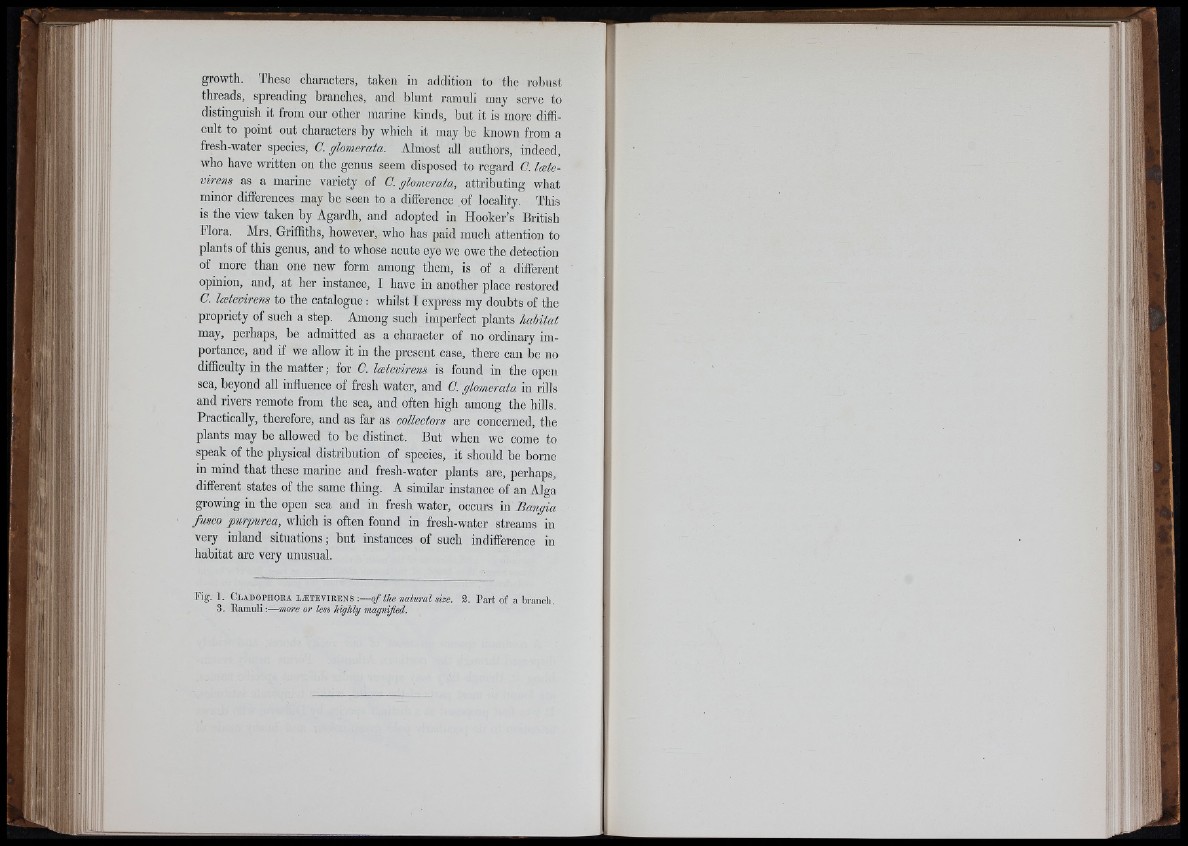
growth. These characters, taken in addition to the robust
threads, spreading branches, and blunt ramuli may serve to
distinguish it from our other marine kinds, bnt it is more difficult
to point out characters by which it may be known from a
fresh-water species, 0. glomerata. Almost all authors, indeed,
who have written on the genus seem disposed to regard G. late-
virens as a marine variety of C. glomerata, attributing what
minor differences may be seen to a difference of locality. This
is the view taken by Agardh, and adopted in Hooker’s British
Flora. Mrs. Griffiths, however, who has paid much attention to
plants of this genus, and to whose acute eye we owe the detection
of more than one new form among them, is of a different
opinion, and, at her instance, I have in another place restored
C. latevirens to the catalogue : whilst I express my doubts of the
propriety of such a step. Among such imperfect plants habitat
may, perhaps, be admitted as a character of no ordinary importance,
and if we allow it in the present case, there can be no
difficulty in the matter; for C. latevirens is found in the open
sea, beyond all influence of fresh water, and C. glomerata in rills
and rivers remote from the sea, and often high among the hills.
Practically, therefore, and as far as collectors are concerned, the
plants may be allowed to be distinct. But when we come to
speak of the physical distribution of species, it should be borne
in mind that these marine and fresh-water plants are, perhaps,
different states of the same thing. A similar instance of an Alga
growing in the open sea and in fresh water, occurs in Bangia
fiisco purpurea, which is often found in fresh-water streams in
very inland situations; but instances of such indifference in
habitat are very unusual.
Fig. 1. Cladophora l * t evirens :— of the natural size. 2. Part of a brandi,
3. Eamuli:— more or less highly magnified.